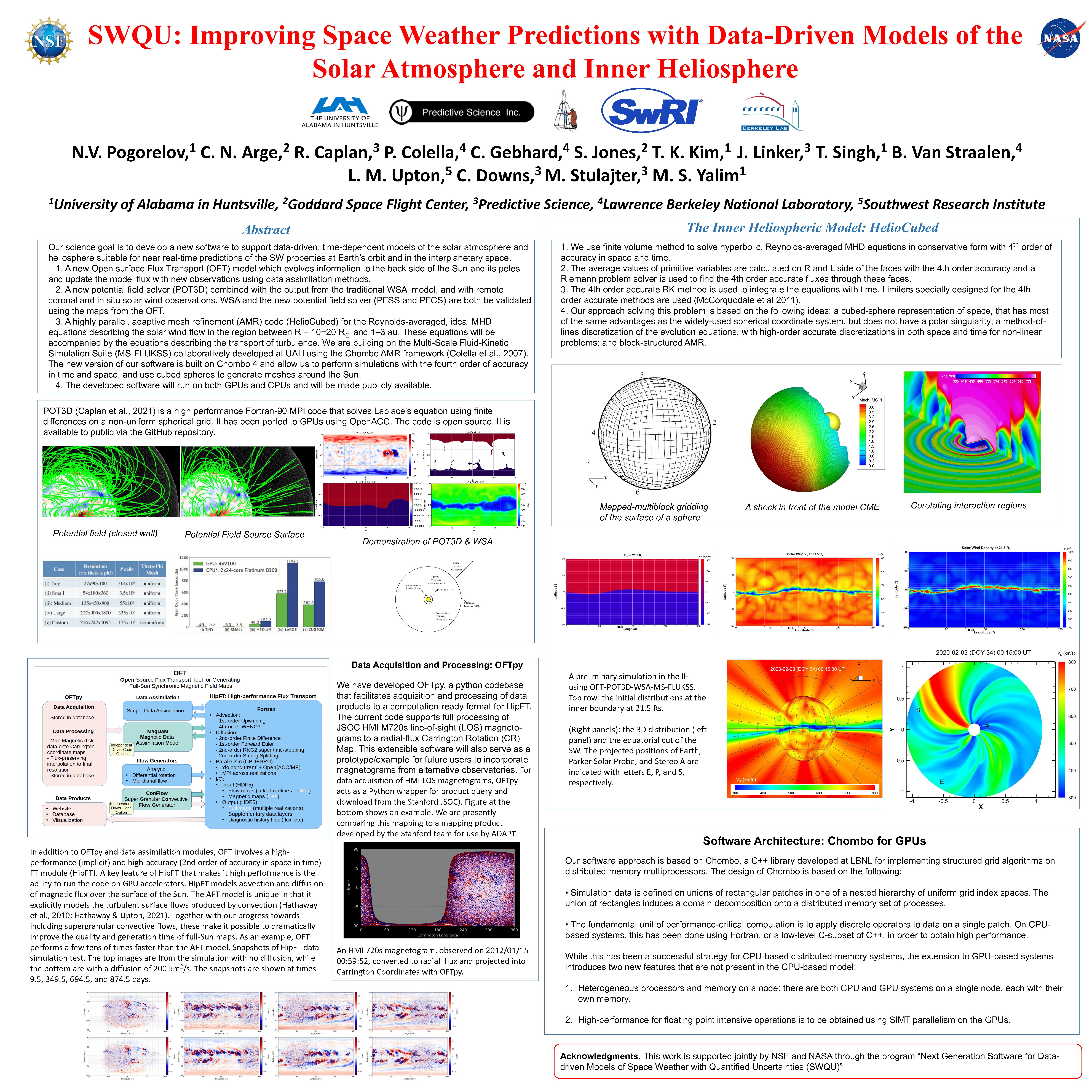Authors: N.V. Pogorelov (University of Alabama in Huntsville), C.N. Arge (NASA Goddard Space Flight Center), P.C. Colella (Lawrence Berkeley National Laboratory), J. Linker (Predictive Science Inc.), L.A. Upton (Southwest Research Institute), B. Van Straalen (Lawrence Berkeley National Laboratory), R. Caplan (Predictive Science Inc.), C. Downs (Predictive Science Inc.), C. Gebhart (Lawrence Berkeley National Laboratory), S. Jones (NASA GSFC), T.K. Kim (University of Alabama in Huntsville), T. Singh (University of Alabama in Huntsville, M.S. Yalim (University of Alabama in Huntsville)
We present our team effort to develop a new chain of data-driven, time-dependent, open-source models of the solar corona and inner heliosphere to predict the solar wind (SW) properties at Earth’s orbit. These new models are providing more accurate solutions and are scalable on massively parallel systems, including Graphic Processor Units (GPUs). Our efforts are aimed to make it possible for the user community to easily experiment with these tools, and combine them with other models to produce more advanced SWx modeling capabilities. We discuss the development of new versions of the (1) flux transport model; (2) potential field solver, and (3) SW MHD model based on
modern computational methods. Component 1 primarily requires the solution of an advection-diffusion
equation on a sphere. Component 2 requires the solution of Laplace’s equation. Finally, Component 3 requires solution of the MHD equations with boundaries specified on the inner surface. The latter component, including various CME treatments approaches, is based on the Multi-Scale Fluid-Kinetic Simulation Suite (MS-FLUKSS) capabilities and takes advantage of the publicly available Chombo adaptive mesh refinement (AMR) framework for
solving partial differential equations, now with the application of mapped grids, such as, cubed spheres. In addition, the newest release of Chombo allows us to perform AMR simulations with the 4-th order of accuracy in space and time – a feature of substantial importance for space weather simulations.


